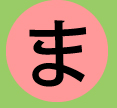 |
 |
 |
 |
 |
 |
HOME |
HISTORY |
RECIPES |
GLOSSARY |
LINKS |
CONTACT US |
HISTORY & INFLUENCES ON JAPANESE CUISINE
Japanese food believe it or not, isn't just sushi made with raw meat. There is a large variety of dishes each with its own distinct and unique flavours.
Countries that have influenced Japanese cooking include - China, Korea, Portugal and Holland. For instance, tempura recipes were developed after European contact, as oils are needed to cook the food in its delicate batter. Rice came from Korea at about the fourth century and soybeans and tea were brought in from China. When Japan became a primarily-Buddhist nation in the 6th century, meat was eschewed and even banned. There were periods where fish itself was not consumed.
In today's world, the Japanese diet consists largely of rice, vegetables, seafood, fruit, and small portions of meat. Rice and tea are part of almost every meal. The diet has been changing in recent decades, however, as the Japanese have begun to consume more red meat and milk. The additional meat and dairy have contributed to a growth spurt—young people are taller, on average, than are members of their parents' generation.
Popular Japanese foods include miso (bean paste) soup, noodles (ramen, udon, and soba), curry and rice, sashimi (slices of raw fish served with soy sauce and wasabi, a pungent form of horseradish), tofu, and pork. Sushi is cold rice, flavoured with vinegar, and served with fish (usually raw). Norimaki is a similar dish, with rice, fish, and/or vegetables wrapped in dried seaweed.
In a traditional meal, the Japanese typically eat from their bowl while holding it at chest level instead of bending down to the table. Chopsticks (hashi) are used to eat most meals, but people generally use forks and knives when eating non-Asian food. Fast food is popular among the young. The main meal is eaten in the evening.
When being entertained, it is polite to follow the lead of one's host. The ability of a visitor to use chopsticks will help create a favourable impression, but it is important not to point them at anyone or leave them crossed. An empty glass will usually be refilled, and it is polite to fill others' glasses before one's own.
A Japanese specialty dish is Unagi (eel), and has been consumed in Japan since the 17th century. It used to be expensive food, but Unagi can be reasonably purchased nowadays. Unagi is rich in protein, calcium, vitamin A and E, and it's believed to give people stamina. So, unagi dishes are eaten the most during the hottest time of the year.
A common unagi dish is unagi no kaba-yaki (grilled eel). Prepared unagi meat (the main bone is removed) is skewered and grilled with sweet basting sauce. It's similar to teri-yaki. Most people in Japan buy unagi no kabayaki at stores instead of making it themselves. Before eating kabayaki, you only have to reheat it with kabayaki sauce . When unagi is grilled over charcoals, the fat from unagi drips and burns, causing smoke. The smoke adds a great flavor to unagi. The smell coming from an unagi restaurant tends to invite many customers.
Commonly, unagi no kabayaki is served over plain rice as a main dish. It's called either una-juu or una-don. Clear soup (suimono) made from unagi liver is called kimo-sui and is served on the side.
Probably the most popular Japanese alcoholic beverage is Sake - Japanese rice wine and is usually consumed hot or warm. Sake, sometimes spelled saki, is often referred to as rice wine because of its high alcoholic content. The brewing process, which is many centuries old, lasts about six weeks and starts with the mixing and kneading together of steamed rice, called koji, with a cultivated mold and water. This mixture is heated and then fermented in large vats, sometimes in the presence of a yeast. Contamination of this brew is prevented by the addition of lactic acid. The liquor is then filtered. Sake, as it is commonly known, is also sometimes referred to as Nihonshu, or even Seishu.